Hollywood loves stories about newspapers, so they should go for this one. A Harvard professor lectures on how whole industries have found it impossible to reinvent themselves in the face of technological revolution. He tells newspaper groups they will have to change almost everything in order to survive. Along comes his church (yes) and asks him to save their own 160-year-old daily paper. In a few short years, the professor becomes a media industry hero.
Clark Gilbert (a hint of Superman there) is the mild-mannered professor who had been lecturing on technological "disruption" when he became an adviser to the American Press Institute on a digital future. Few newspapers took his advice. But someone was listening. In 2009, Gilbert's church came calling and he took control of the Mormon-owned Deseret Media: a chance to put theory into practice.
Four years on, his real-life laboratory experiment has produced dramatic results: strong digital growth but also a bounce-back in newspaper revenues. Everyone wants to know the secret.
It is almost three years since Gilbert cut Deseret News staffing by 43% (85 people) and merged newsrooms with its KSL television and radio stations. But the professor contradicted the talk of 'cross-platform strategies' that had long consumed media executives across the world.
Instead, the professor was making his case for a new media strategy based on two fundamental points about 'disruptive innovation':
1.Only 9% of all companies in 'disrupted' industries survive. "Let's be generous and double that: fewer than one in five traditional broadcasters and publishers will survive if historical trends hold".
2.But 100% of that surviving 9% had set up a disruptive (new) business as a totally separate division of the parent company - "no exceptions." That means a separate location, management, and team - with a significant number of 'digital native' recruits and investment to become "the best in the world". A separate digital company won't guarantee success, Gilbert argues. It is "necessary but not sufficient."
So, while newspaper executives everywhere were (and mostly still are), developing new digital businesses cheek-by-jowl with their traditional operations, Clark Gilbert is doing the opposite. He believes, quite simply, that the legacy (hard copy) and the digital (online) operations can each thrive only at a distance from each other, literally.
In addition to Utah's leading daily newspaper, Deseret Media is KSL-TV, a leading Utah TV channel, and two radio stations. Just the kind of traditional media business that ought to be hurting. Not a bit of it:
•Deseret News' weekday and Sunday circulation was up 23% and 10% respectively in the six months to March 31 2013 - while its close rival was -6% and +3%. Its 23m monthly digital page views make it the fastest-growing combined print and online readership (+33% weekday and +90% on Sunday) among American newspapers
•Deseret Digital revenue has grown by an average of 40% for each of the last three years. Page views were up by 50% and unique monthly visitors by 40% in the last 12 months.
•The KSL radio and TV website notched up 200m monthly page views and 3million monthly uniques, making it: the country's top broadcast site, with two-third of all Salt Lake City adults visiting at least monthly; one of the first to stream radio and TV content; and the first to offer free classifieds - beating Craigslist in Utah.
So far so good. However, the challenge everywhere else, especially for still-profitable traditional media businesses, lies in the potentially expensive idea of 'Chinese walls' between new and old media. Gilbert also insists on a "capabilities exchange" between the two companies: working together without interfering in each other's operations. And its Deseret Connect is a content system that curates stories written by reporters, bloggers and some 3,000 community-based contributors. It provides content for newspaper, online and broadcasts. This is one traditional news operation that takes seriously aggregation (ie 'outside' editorial content).
Deseret News is Utah's oldest daily and, indeed, its oldest surviving business, having been launched within a few years of the establishment there of the Mormon church (the Church of Jesus Christ of Latter-day Saints). 'Deseret' (meaning 'bumblebee') had been the Mormons' chosen name for their 19th century state. Now, the legendary newspaper is part of a media empire at the heart of a church with 14m worldwide followers, assets of $30bn and annual business revenues of $5bn from investments in financial services, property - and media.
Its Brigham Young University houses one of the four most popular business schools in the US. The church that earns some $7bn from 'tithes' (10% of members' income) is nothing if not businesslike, a reputation enhanced by its media moves.
The company's network of digital media sites and services is focused primarily on the Utah market, but is increasingly national and international, not least to a Mormon congregation that is 40% American but has strong concentrations in South America and the AsiaPacific.
The fast-growing digital business now accounts for 25% of the group with broadcast 40% and print 35%. It expects digital to reach 50% within three years. The company's newspaper-based digital services now account for some 45% of its newspaper revenues, compared with the US average of 17%.
The increasingly-prosperous Utah's unique position as a state with its own religion (60%+ of the three million residents are Mormons) must give Deseret Media some advantage. And Gallup Poll 'voted' it "the best state to live in". This is a community made for media.
Deseret is an unusual blend of national, local, and even international news media - which, arguably, makes it an even more interesting case study for legacy media groups.
It has taken an academic and his church to provide the best blueprint so far for the survival of traditional media companies.
Media fortune, fame & folly
